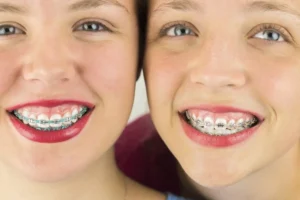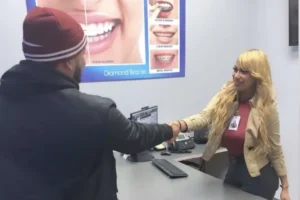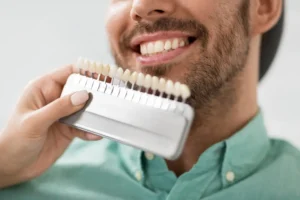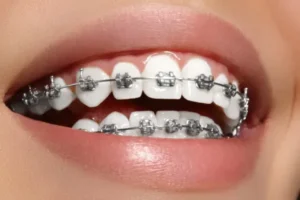De-Bonding & Retention Phase
Once your orthodontic treatment is complete, your misaligned teeth are corrected, and your teeth are straightened, it’s time for the day everyone looks forward to: the removal of braces, or de-bonding. You’ll visit your orthodontist for a final check of your progress. If your orthodontist approves your case as complete, the braces appliance will be removed by their assistants using specialized instruments. They will also remove any excess residue left by the bonding glue.
In the next step, you’ll see your beautiful new smile. Photos will be taken to document your results. But remember, your orthodontic care after braces isn’t over yet. Retainers play a crucial role in preventing your teeth from moving back to their original positions.
You’ll receive either a bonded retainer, which is attached to the back of your teeth and is not visible, or a removable retainer. Several types of retainers are available, including plastic aligners like Invisalign, and those that use rubber bands. Understanding all the options is important, so consider reading a comprehensive retainer guide.
Maintaining good oral hygiene is essential during this period. Remember, the treatment times for each individual may vary. The key is to follow your orthodontist’s advice and maintain regular check-ups to ensure the best results for your smile.
You’ll generally go back to the orthodontist for at least a few follow-up visits after de-bonding and retainer insertion, generally twice a year for 1-2 years. If you lose or break your retainer, you’ll need to go back to replace it, but as long as you continue to wear your retainer and take good care of your teeth, you may never need to go back to the orthodontist!

Signs an Adult or Child Need Braces
Are you questioning the need for braces for yourself or a family member? When braces are necessary is not always clear. Sometimes, the signs that point to a need for orthodontic care can catch you off guard.
In both children and adults, teeth alignment plays a crucial role in determining the need for braces. For instance, a child’s teeth might be growing in crooked or overlapping. In adults, teeth may have shifted over time. These are signs that braces might be beneficial.
Different types of braces should be considered. Ceramic braces, for example, are less noticeable than traditional metal braces. Lingual braces, on the other hand, are hidden behind the teeth. The type of braces chosen often depends on the individual’s comfort and treatment planning.
Remember, wearing braces is not just about improving physical appearance. Enhancing oral health is also a part of it. Properly aligned teeth are easier to clean, which can reduce the risk of cavities and gum disease.
Thus, if you believe you may require braces, don’t hesitate to seek advice from an orthodontist. It could be a step towards a healthier, more confident smile.
Below are some tell-tale signs that someone needs braces:
Signs a Child Needs Braces
- Severely crowded teeth
- Gaps between permanent teeth
- Trouble closing mouth fully
- Mouth breathing
- Clicking jaw
- Complaints of jaw pain, dental pain, or severe headaches
- Snoring or trouble sleeping
- Premature or delayed loss of primary (baby) teeth
- Too many teeth or not enough teeth
- Mouth trauma causing disruption to teeth or dental growth
Signs an Adults Need Braces
- Difficulty flossing or brushing
- Speech impediments such as a lisp
- Difficulty closing the mouth so that all teeth touch
- Severe crowding or overlapping teeth
- Clicking jaw when chewing or biting
- Aching jaw or headaches
- Large gaps between teeth
- Pain or discomfort when chewing or biting
- Trouble sleeping due to jaw pain
The positioning of baby teeth is not a perfect indicator of a future need for braces: for instance, some children have large gaps between their primary teeth that will be filled when the permanent teeth grow in.
However, the earlier children see an orthodontist, the greater the potential for fully effective orthodontic care. The American Association of Orthodontists recommends children see an orthodontist by age 7, for an examination and to determine the potential need for braces, as well as any early interventions that can be taken to minimize the need for further treatment later.
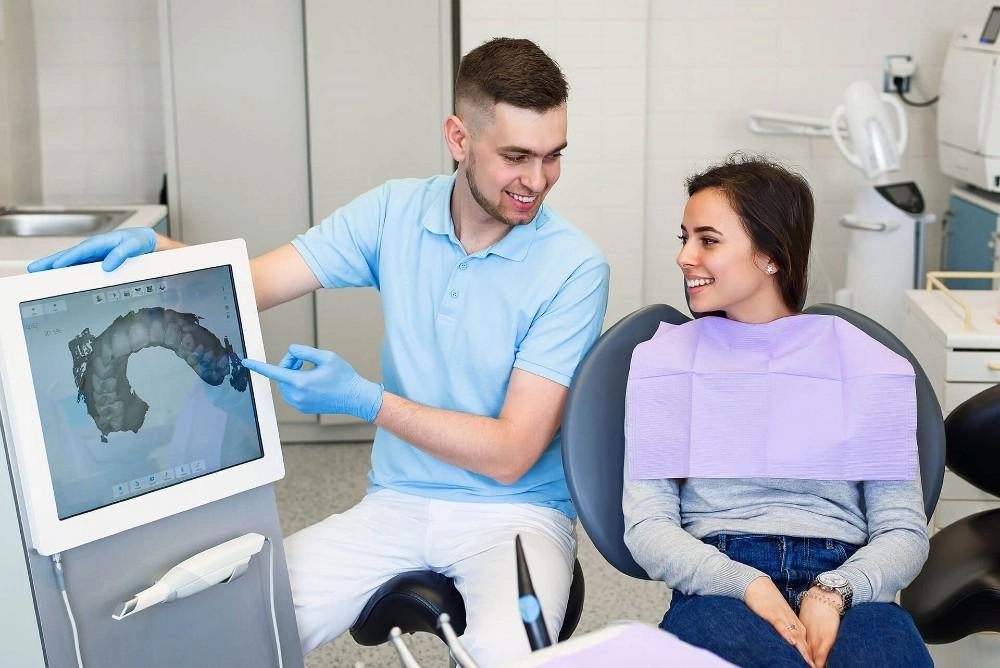
Questions to Ask the Orthodontist Doctor at Your Visit
When you’re considering braces, the initial consultation with your orthodontist is crucial. It’s the perfect opportunity to ask any questions you might have about your treatment plan, their diagnosis, and the services they offer. You might want to ask about Questions for orthodontist consultation, or how to start treatment.
Remember, this initial consultation might be free of charge and doesn’t require any commitment. This means you can visit several orthodontists to compare prices and treatment options. You might want to ask about the use of stainless steel in braces, or how braces can correct upper teeth alignment. If thumb sucking has affected your teeth alignment, this is also a good time to discuss it.
By asking these questions, you can ensure you’re making an informed decision about your orthodontic treatment.
Questions to ask your doctor at your consultation:
- How long will my treatment take?
- Do you have examples of similar patient treatments you can show me?
- What is your experience treating my specific kind of condition?
- What is the cost of the various treatments you offer?
- Does your office accept insurance?
- Does your office offer monthly payment plans, and is there an interest fee?
- Are you offering any savings or promotions on certain treatments?
- Are you licensed in this state to provide orthodontic services?
- How long have you been practicing orthodontics?
- Where did you train for your orthodontic license?
- Are you practicing out of a freestanding orthodontic facility or a general dental office?
- Are you always available in case of emergency?
- What is your Invisalign experience and rank?
- Are all your assistants state certified?
- Are you using Invisalign aligners or other types of aligners?
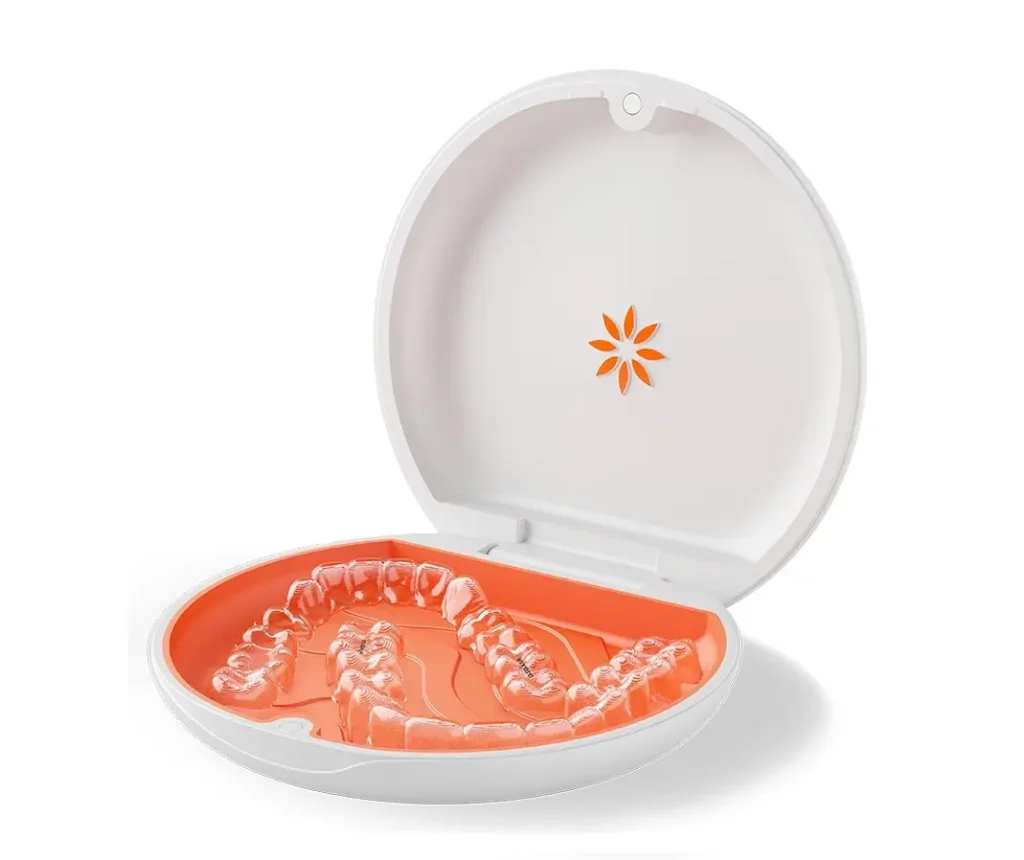
Alternatives To Brace
Considering alternatives to traditional braces? You have available alternatives.
Begin by scheduling complimentary consultations with different orthodontists. This allows you to explore without commitment. Compare prices and treatment plans to make an informed decision.
Explore various orthodontic options to find the right fit for you. Remember, the initial consultations are often free, providing a chance to assess alternatives. Take advantage of this opportunity to make an informed choice about your orthodontic treatment.
Invisalign clear aligners
If you don’t want the visible appearance of a traditional orthodontic appliance, Invisalign clear aligners are an excellent alternative. Removable, discreet, and easy to clean, Invisalign aligners are a popular option for teens and adults of all ages. Learn more about Invisalign.
Oral surgery
Depending on your specific condition, the issue may be corrected using oral surgery. This is the case for issues such as impacted teeth and crowded teeth, where extraction is the only treatment necessary.
Veneers
If your issues with your teeth are only cosmetic, you can get veneers to cover the surfaces of your teeth and improve the appearance of your smile.
Veneers do not correct any underlying issues, however, so this is not a good option for patients with more complex orthodontic issues that impact their bite, speaking, oral health, or overall health. For those patients, it may be necessary to pursue orthodontic care before getting veneers.

